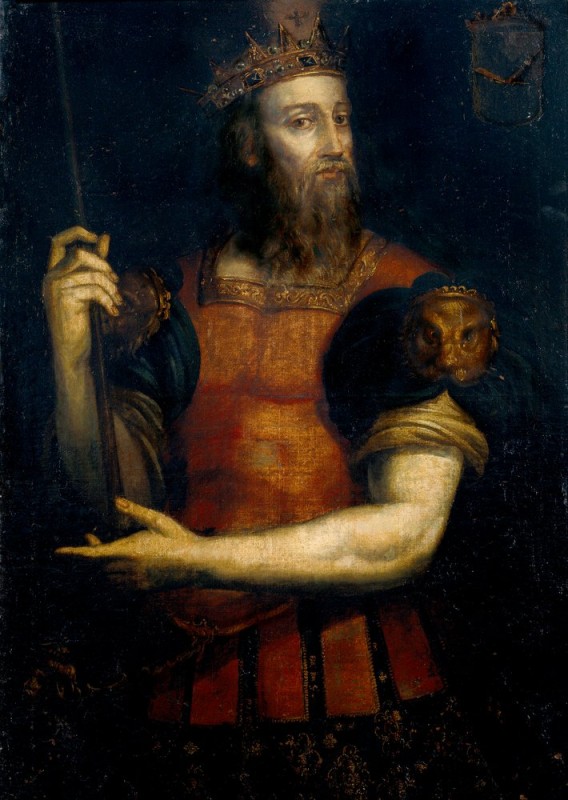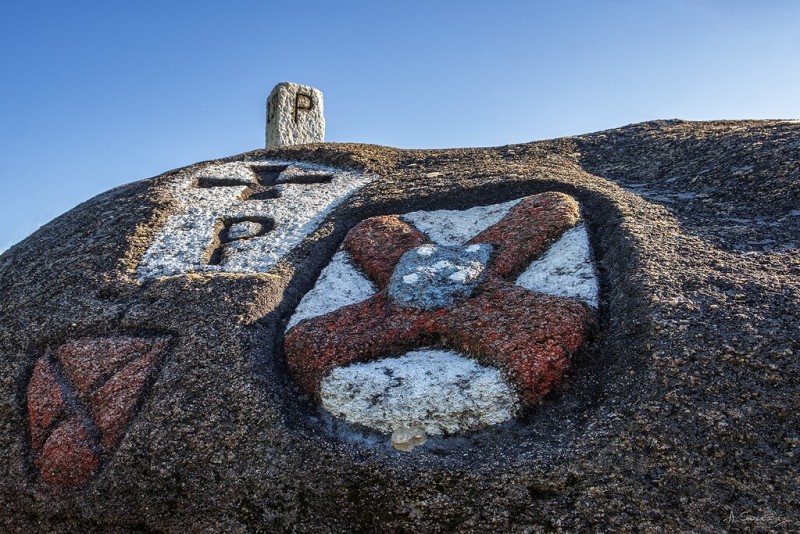
Walk in our backyard
PR8 CHV – Villarelho da Raia - path
Castro de Wamba
Castro de Wamba is an archaeological and mystical site on the border between Portugal and Spain, deeply rooted in the history of the Alto Tâmega and the Galician-Leonese world. It is a walled settlement with the remains of a protohistoric sanctuary, consisting of both a rectangular and a circular plan. The site was fortified with two concentric walls and a moat, carved directly into the rock.
As early as the 6th century, this site was chosen to build a small chapel in memory of King Wamba, a figure steeped in both history and legend.

King Wamba – from farmer to king
According to tradition, Wamba (672–680) was a simple farmer who was unexpectedly appointed by God as king of the Visigoths. The miracle that marked his selection occurred in his garden: a withered rosebush suddenly burst into full bloom when he was offered the kingship. This sign was interpreted as divine confirmation of his calling.
Wamba became renowned for his justice, simplicity, and wisdom. In a time of political unrest, he restored order and authority, and in the popular imagination, he became an almost saintly figure. His name eventually supplanted the original name of this settlement, so great was his reputation. His virtues were celebrated well into the Middle Ages, and he lives on in legends and place names.
A borderland full of history – Cambedo da Raia
The Castro is located near Cambedo da Raia, a village that played a strategic role for centuries on the border between Portugal and Spain. This region was often the scene of border conflicts, smuggling, and folklore, with its inhabitants constantly balancing between two kingdoms.

Cambedo remains known to this day as a place where stories of struggle, community, and identity have been preserved. During the 19th-century border adjustments and again in the 20th century (such as during the events of 1946), Cambedo's location once again played a crucial role. The Castro de Wamba is a tangible reminder of this long history of habitation and struggle.
The Castro de Wamba in modern times
Until the 1960s, three round huts still stood within the walls. These were demolished, and the rubble was used to build the road to Cambedo. Despite this intervention, the place retained its mysterious and solitary character, a place that fuels the imagination and invites contemplation.
Among the most important finds is a remarkable discovery:
Ara (altar), composed of a capital, shaft, and base, dedicated to Jupiter Optimus. This indicates the presence of Roman religious influences and demonstrates how this site was venerated and used by various cultures.
A place of memory and imagination
Castro de Wamba is more than an archaeological site: it's a symbol of transnational history. Here, the stories of the Visigothic king Wamba, the ancient settlement, and the modern struggle for identity and existence converge. For hikers on the Vitarelho da Raia trail, it's a highlight: a place where nature, history, and legend intersect.
This is our own website with the best price. Click here for our accommodations or ask us your question.




